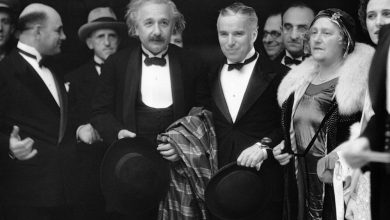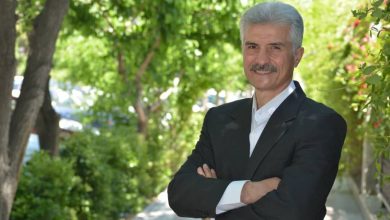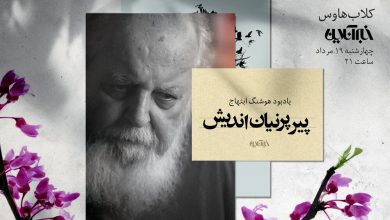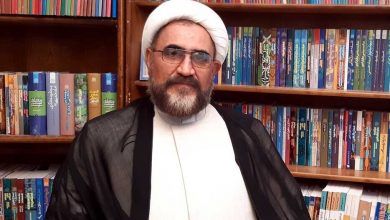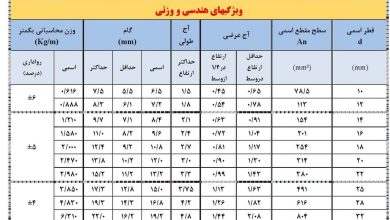At the invitation of the friend of the world and his wise personality, Mr. Hujjat al-Islam and Muslims Fakhruddin Sabri, who is currently the head of the National Museum of the Holy Qur’an and previously held other important positions, to this holy place, and I will make a move that has a certain spirituality and spirituality in this space.

The National Museum of the Holy Qur’an is currently the only specialized museum among the state’s museums that displays the gradual development of Qur’anic arts in the period from the fourth century AH to the end of the Qajar period and answers various questions. Categories of people and artists. What adds to the beauty and attractiveness of this building is that the interior space and display of the works have the shape of the sun on all floors, which is what was used by Muslim artists and goldsmiths as an indicator of contravention in works in all the past Islamic centuries.
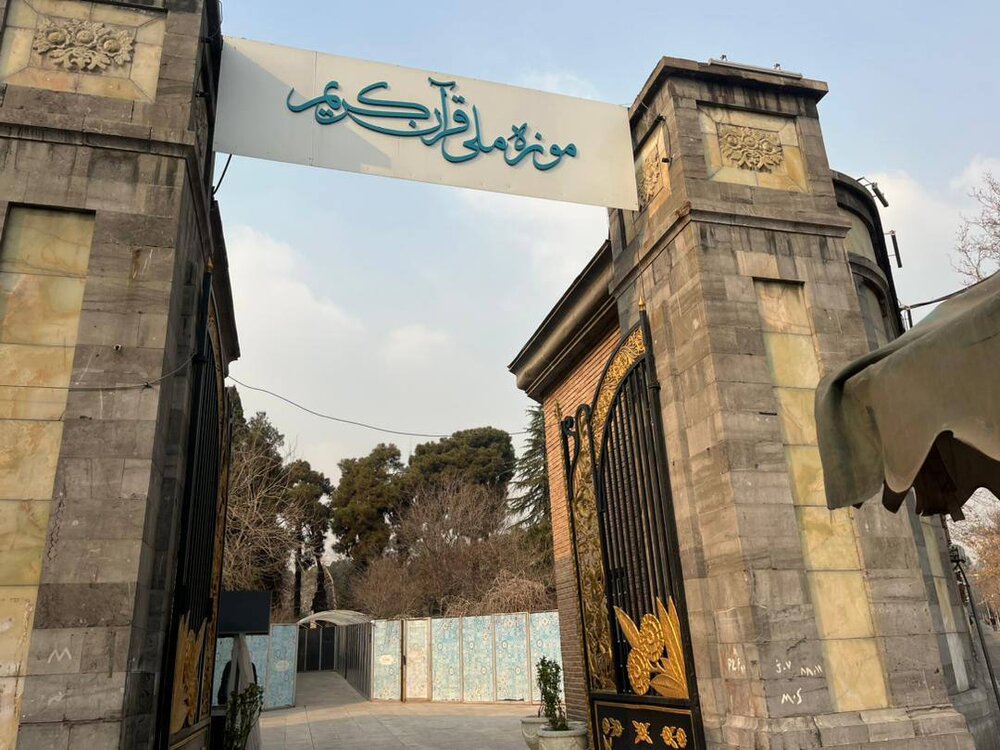
After the warm welcome received by the head of the museum, who showed his wonderful personality, we visited some of the outstanding Qur’anic works that have survived from the fourth century AH and beyond. At this time, Mrs. Forough Kassab is one of the experts and lovers of national works, especially the Holy Qur’an, which has been active in this field for many years and can be considered as one of the axes for preserving the works of the Qur’an. Anik Museum in this place, and Mr. Muhammad Ibrahimi, the expert, the owner of knowledge, historian, opinion, expert on cultural heritage and historical antiquities, who were invited to the museum on this day thanks to Mr. Sabry, to visit a number of beautiful Quranic works in precious manuscripts, which made people wonder and wonder. , we paid

220 copies of beautiful manuscripts, including Qurans, 56 prayer books, 15 collections of poetry, blessed and decorated with Quranic verses, and 6 Quranic scrolls, each written in a way that amazes the visitor. in this place. Qurans from the fourth century AH, which were written in the Kufic script, to the sixth and seventh centuries of the Timurid, and were written in the beautiful Naskh script.
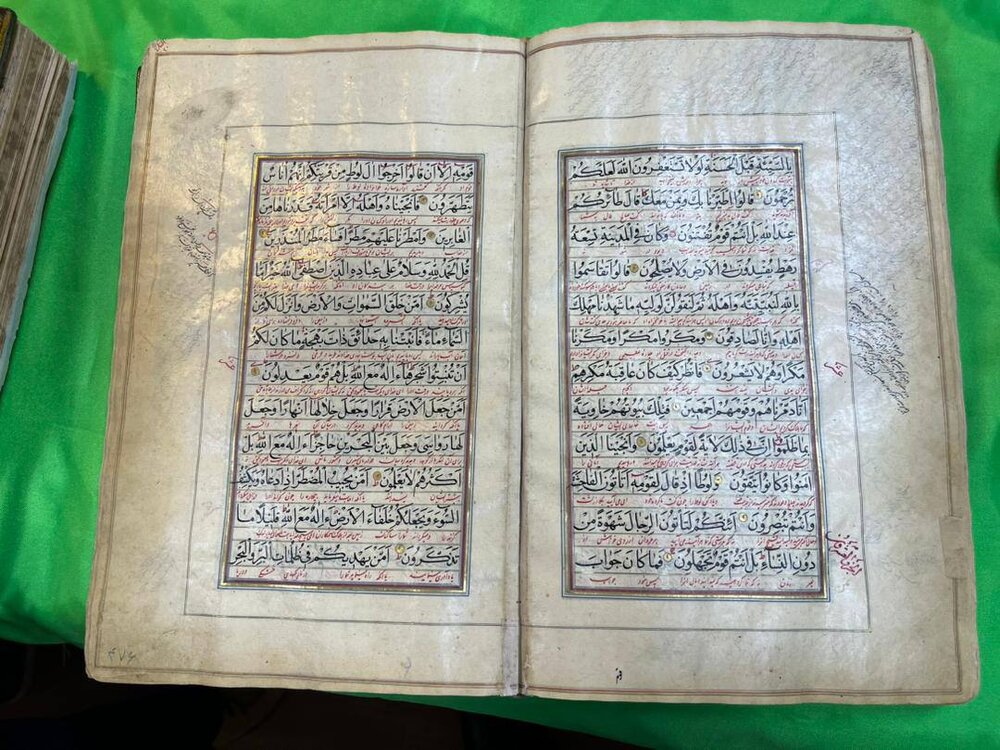
It should be noted that during this period, the Mushafs were written in the style of Rayhan (thick line) so that on each page the beginning, middle and end lines were written in bold and prominent text, which has a special beauty, and in this regard he mentioned it. From now on, the art of gilding was used, and gilding decorated the margins and text of the Qur’an with the beautiful art of gilding, which increased the beauty of the Qur’anic manuscripts.
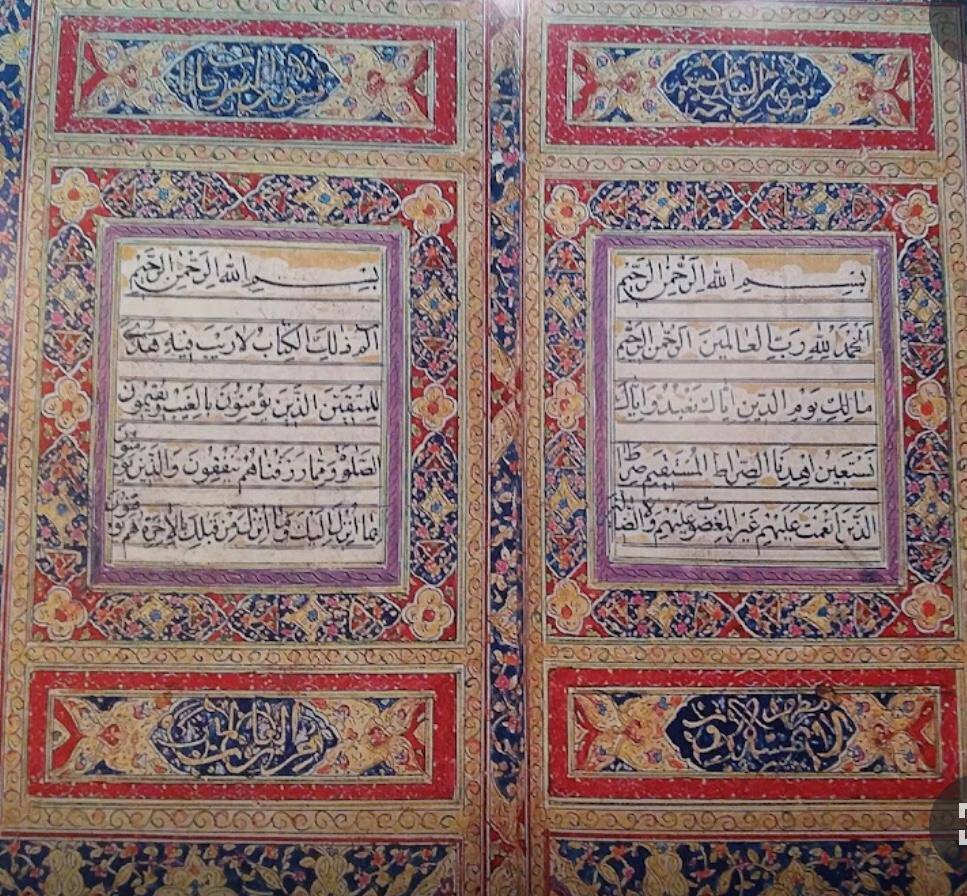
During the Safavid, Afsharid, and Zand periods, the arts of writing and gilding continued, and each acquired its own status and characteristics in this regard. It is interesting that since the Qajar era, beautiful works of this kind of Qur’anic writings and supplications have been left, among which are the manuscripts of Mrs. Umm Salama, the daughter of Fath Ali Shah Qajar, who is one of the writers. Of the Qur’anic manuscripts, supplications, and the Ashura pilgrimage … it is considered a petition! The last memorable Qur’an from the Qajar era in this precious museum is the beautiful handwritten Qur’an of Aghajan Partu, which was written in 1192 AH, that is, 152 years ago.
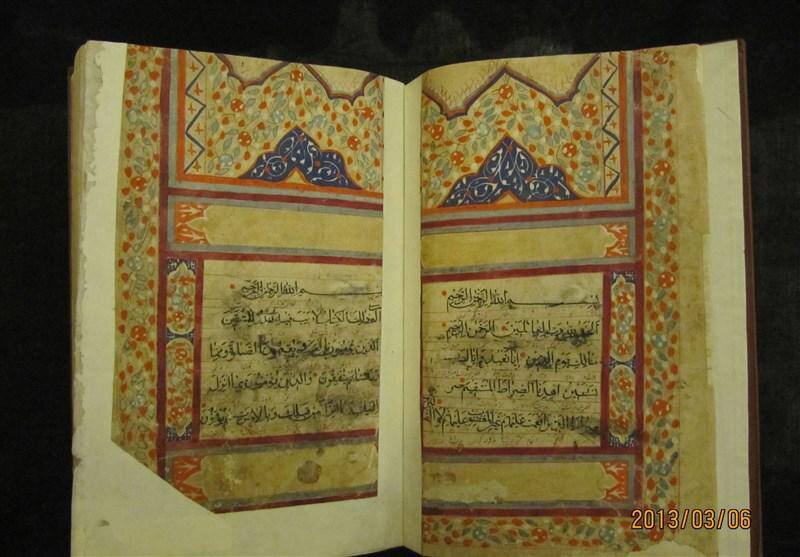
In these moments, which are undoubtedly not moments of human life, it is very difficult to see such hand-drawn pictures, and every page of the Korans and other scrolls and Korans, except for amazement and regret at this God- blessing, on the one hand, and on the other, no The success of writing in this field can only be considered the success of God.
The National Museum of the Holy Qur’an is located in a green area of about 10,000 square meters, and under this green space, at a depth of 14 meters, there is a building inspired by Iranian Islamic architecture of three floors and 4,000 square meters. square meters, the maximum strength of construction and its beauty, which distinguished this group from other contemporary buildings, and the area of the museum’s library is about 500 square meters and it can accommodate 40,000 books. But now there are 3,500 books in the library and they are being prepared.

The National Museum of the Holy Qur’an is located in a green area of about 10,000 square meters, and under this green space, at a depth of 14 meters, there is a building inspired by Iranian Islamic architecture of three floors and 4,000 square meters. square meters, the maximum strength of construction and its beauty, which distinguished this group from other contemporary buildings, and the area of the museum’s library is about 500 square meters and it can accommodate 40,000 books. But now there are 3,500 books in the library and they are being prepared.
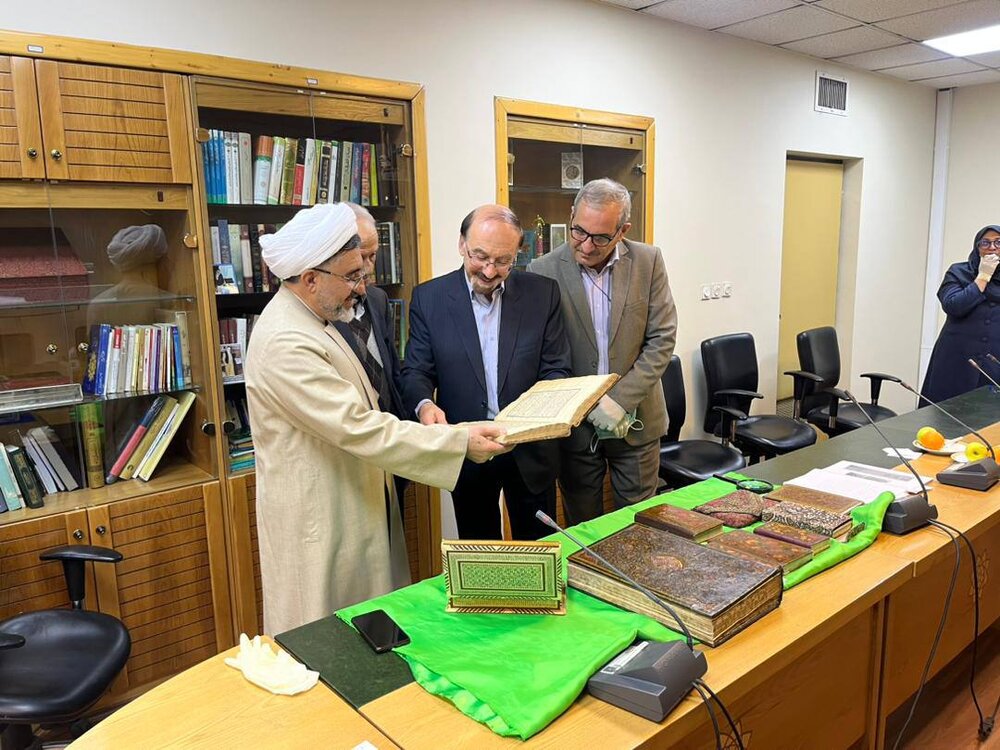
The purpose of establishing the National Museum of the Holy Qur’an, independently and at the national level, is for this group to be responsible for holding all specialized exhibitions of the Holy Qur’an affiliated to the Cultural Heritage, Handicrafts and Tourism Organization in order to express the devotion of Iranians to the sacred area of the Holy Qur’an and also, to represent the taste and art of Iranian artists in the field of writing the word of revelation through specialized exhibitions inside and outside Iran.
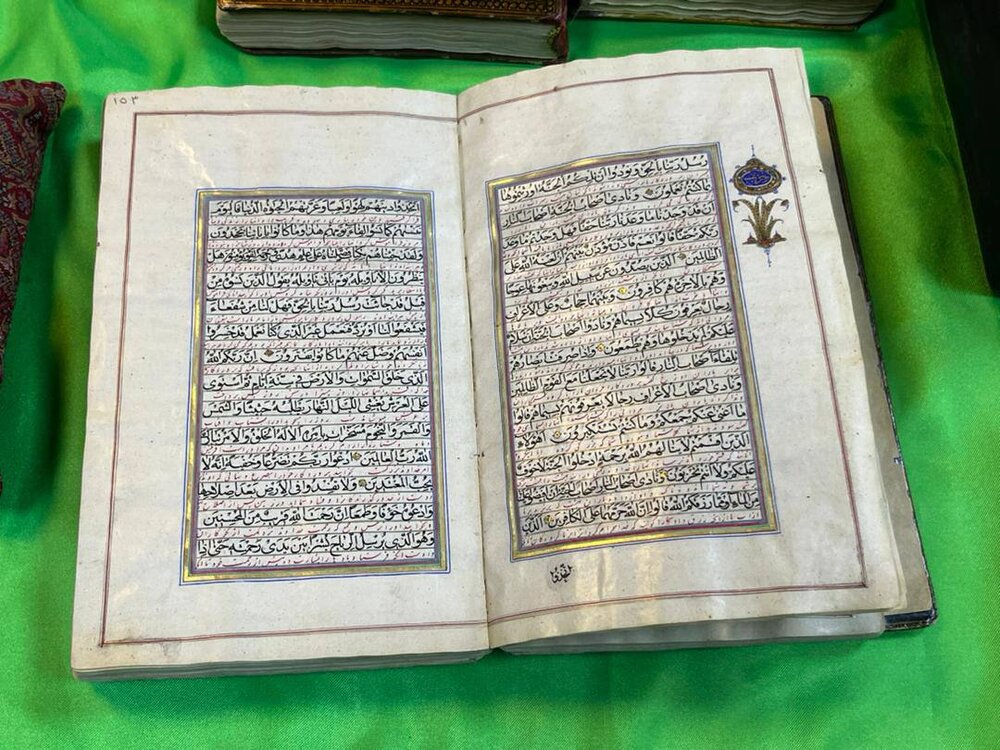
Historical and cultural works, including manuscripts and lithographs of the Holy Qur’an, prayer books, Qur’anic fragments, manuscripts, and poems of great poets such as Saadi, Hafez, Mawlawi, etc., and Qur’anic objects, including dishes, boxes, pencils, and vases. Quranic shirts and brochures are decorated with Quranic verses and contemporary works, including the works of contemporary calligraphers and painters, as well as calligraphy, paintings, and visual works.

The National Museum of the Holy Quran is located in the northwest of the intersection of Imam Khomeini Street (RA) and Vali-Asr Street (AJ). This building was actually built in front of the Marble Palace and was completely underground. The museum has two entrances, one at the intersection of Imam Khomeini Street (RA) and Vali-Asr Street (AJ) and the other at Vali-Asr Street (AJ), which is currently the way for visitors to pass through the first entrance.
On August 12, 2004, by order of Mr. Mohammad Khatami, the then president, Dr. Ahmad Masjid Jami was appointed Chairman of the Board of Trustees of the Holy Quran Museum, and in October of the same year, the National Museum of the Holy Quran was appointed. The museum was opened during a ceremony attended by Aya Hashemi Rafsanjani, and a gathering of many scholars and lovers of the Holy Qur’an was opened.
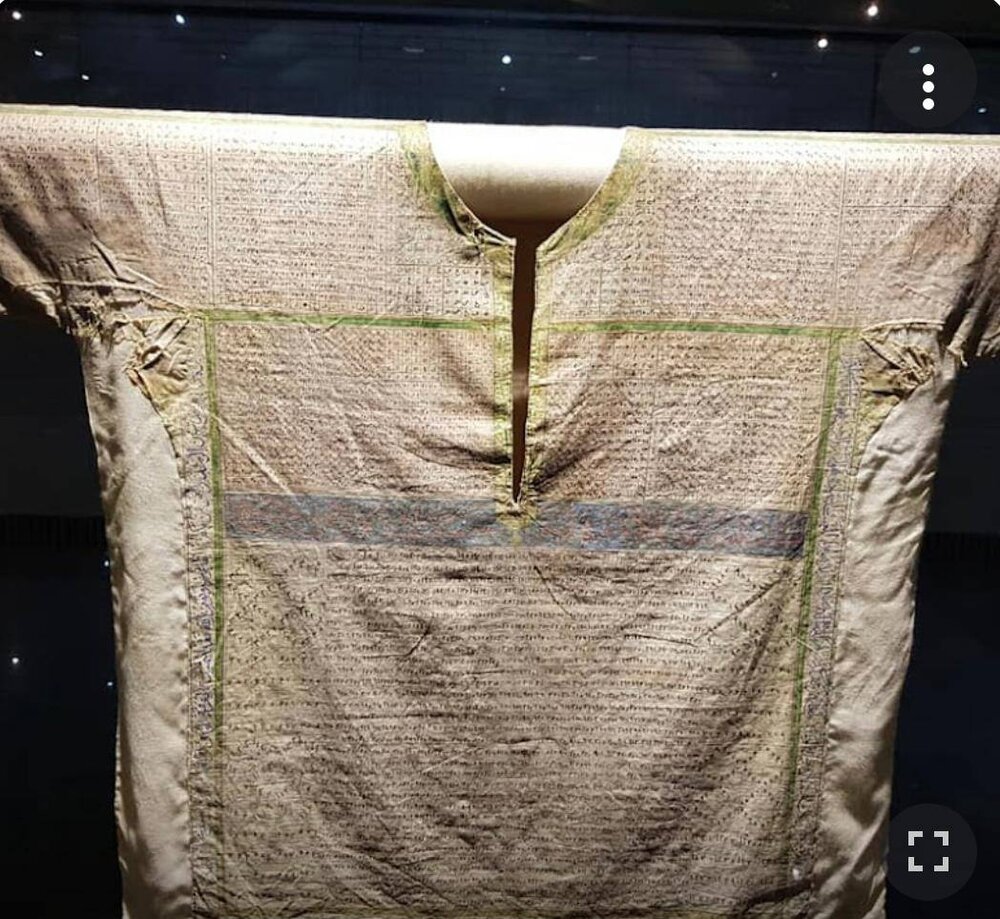
Then, in Shahrivar in 1388, he became the director of the National Museum of the Holy Qur’an, on the orders of his then deputy, Hujjat al-Islam wal-Muslim Fakhr al-Din Sabri. “Engineering” and “Structure” play an essential role in the architecture of this complex. The geometry factor (which is also in keeping with the cultural function of the complex) plays a very visual role, particularly in the design of the main atrium. The structural factor is also an interesting example of the use of building structural elements in the architectural design of this complex with subtle use of geometric shapes in the construction of the ceilings (particularly in the library section) and in the roof of the main building. Coliseum Hall.
The effort to use natural light and illumination, through the placement of skylights on the roof of the complex, has resulted in the library foyer, parts of the museum, galleries and the administrative section benefiting from light to the required extent. in the selection of materials. High durability, reduced need for painting, renovation and maintenance, available facilities, and attention to the importance of internal views (in a building that has no external view) were the main criteria for selection. Therefore, in a large part of the building, a facade of visible brick and concrete (ax concrete with white cement) was used.
The benefit of special tiling designs and the familiar motifs of religious spaces has added to the closeness and interdependence between the architecture of this complex and the atmosphere of local and traditional architecture. In the construction of this complex, an all-concrete structure was used, and a double wall and concrete insulation that extends throughout the external environment are used. of the building, and protects the entire complex from the pressure and moisture of the surrounding soil underground. The use of advanced ventilation systems and the provision of artificial lighting created favorable conditions in this basement complex.
The taste and taste of the architect in the selection of materials and the careful execution of the work using the strength and skill of Iranian masters in bricklaying, tiles, carpentry, stone, etc., helped the beauty of the spaces and created a pleasant feeling of being in an important and public cultural place.

Of the three floors of the museum, the first and second negative floors are dedicated to displaying the manuscripts of the Holy Qur’an, prayer books and other subjects that branch out from the sciences of the Qur’an. On the sides of each floor are fine art galleries and galleries, sometimes used for side exhibitions and sometimes as a supplement to museum works. Also, in these galleries, paintings, designs, calligraphy and paintings by contemporary artists are displayed.
Each of these is related to Quranic themes in some way, and most of them belong to world-famous writers and artists, such as Mir Ali Harafi, Muhammad Ibrahim Qomi, Abd al-Qadir Hosseini, and Umm Salma, daughter of Fat Ali Shah. Qajar.
A visit to this museum can answer many questions of scholars in the field of gradual transformation of the book, because this museum now includes 650 works, most of which are Quranic manuscripts, while at the beginning of its establishment, this museum had 49 manuscripts and the formation of 151 paintings.
At the end of this beautiful and amazing meeting, which lasted nearly three hours, after participating in congregational prayer with loved ones and servants in the National Museum and presenting the precious gift of the holy shrine of the martyrs, Hazrat Aba Abdullah Al-Hussein (pbuh), who believed without a doubt, I believe that the mission of delivering this blessed gift from The honorable apostle of these beloved ones, and sometimes tears welled up from their eyes when they obtained them, this holy place and beautiful museum. The Holy Qur’an, which is an integral part of the progeny and the Ahl al-Bayt, I left the museum with a beautiful farewell and the hospitality of the head of the museum, Hujjat al-Islam, Muslim Sabri and my dear colleagues.
When I returned, thinking in my mind and recording the date of the visit, the date, the writings, the names of the writers, and other things, I was thinking that (The success of a friend is not given to anyone.)
What greater success these scribes have had in writing the Qur’an, and these also our dear ones have found success in serving in such a place!
Their success is increasing day by day
And let this museum expand day by day
May the success of following the teachings and guides of the Qur’an, that is, the infallible Imams (peace be upon them), be stronger.
Amen
